Brownsville Blues (Goin' To Brownsville)
Brownsville Blues (Goin' To Brownsville)
When Big Joe Williams informed Bob Koester of Delmark Records the Sleepy John Estes was still living, Koester was naturally skeptical. No doubt, the improbability of Estes being alive kept blues researchers from looking for him. Discographies list 1941 as his last recording date. It was Chicagoan David Blumenthal who found him while making a documentary film in Brownsville, Tennessee. Estes was brought to Chicago for an exploratory recording session. On March 24, 1962 Sleepy John recorded most of the songs on the album including six previously unissued tracks not on the original LP release of Brownsville Blues. Four songs from this session were issued on John's first Delmark release “The Legend of Sleepy John Estes.” However, most of the material on Legend was from the June, 1962 group session. The theme of Brownsville Blues is the many people and places of John's hometown. Here is the legendary country blues artist Sleepy John Estes singing as well as ever, still writing blues poetry, and playing guitar better than in former years.
Brownsville Blues
John Adam Estes was born near Ripley, Tennessee on January 25, 1904. His parents were sharecroppers who had sixteen children. Like his brothers and sisters, Estes grew up working his parents' fields. The most traumatic event of his childhood occurred during a baseball game when a stone struck him in the eye. He lost his vision completely in one eye and his other grew worse and worse until, by his fifties, he was left completely blind.
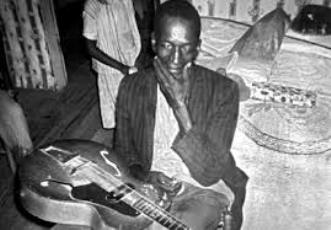
Sleepy John Estes
Estes' father, who played guitar, was probably the first musician he ever heard. His father showed Estes a few chords, let him play his guitar occasionally, and taught him his first song, a ditty called "Chocolate Drop." Before long Estes had built his own cigar-box instruments on which he practiced. At the age of 19, while working as a field hand, he began to perform professionally. The venues were mostly local parties and picnics, with the accompaniment of Hammie Nixon, a harmonica player, and James "Yank" Rachell, a guitarist and mandolin player. He would continue to work on and off with both musicians for more than fifty years.
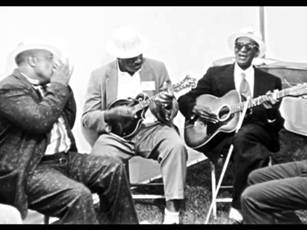
Nixon, Rachell & Estes
Never an outstanding guitarist, Estes relied on his expressive voice to carry his music, and the recordings he made from 1929 on have enormous appeal and remain remarkably accessible today. Estes' records were popular and their sales were good, at least until the Depression deepened and the poor could no longer afford luxuries like phonograph records. Estes made his base in Brownsville where he continued to live and perform, while making regular sorties into Arkansas and Missouri. He went up to Chicago occasionally as well and even claimed to have played for gangster Al Capone, who Estes said was crazy about blues. Despite the popularity of his 1929 records, Estes was not able to record again during the first three years of the 1930s. When he heard that Nixon and Son Bonds had just returned from recording in Chicago, he persuaded Nixon to return to the Windy City and set up a session for him. Finally, in 1934 Estes returned to the studio with Hammie Nixon to record for the Decca label. At the session Estes cut "Someday Baby" and "Drop Down Mama," songs that went on to become blues standards.

Brownsville, Town Square
After the 1934 session Estes moved to Chicago where he lived for most of the 1930s. His popularity grew. In 1937 he recorded "Floating Bridge," about being swept off a bridge by a raging river and rescued at the last minute by Hammie Nixon. In 1938 he wrote "Fire Department Blues" about his neighbor Martha Hardin. His last session in 1941 saw his musical chronicle of Brownsville in full flower. He sang about a local lawyer, Mr. Clark, who worked as hard for the poor who couldn't pay as much as for the rich who could. He sang about little Laura whose sexual fantasies had a way of all coming true. And he sang about how machines were pushing sharecroppers off the land around town. That session was Estes' last for some 20 years.
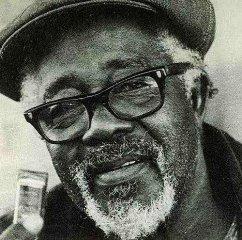
Hammie Nixon
Big Bill Broonzy called John Estes' style of singing "crying" the blues because of its overt emotional quality. Actually, his vocal style harks back to his tenure as a work-gang leader for a railroad maintenance crew, where his vocal improvisations and keen, cutting voice set the pace for work activities. Estes sounded so much like an old man, even on his early records, that blues revivalists reportedly delayed looking for him because they assumed he would have to be long dead. Nicknamed "Sleepy" John Estes, supposedly because of his ability to sleep standing up.
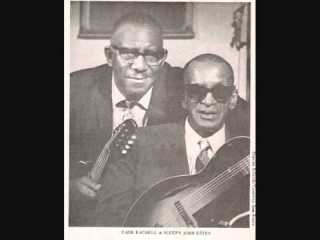
James Yank Rachell & Sleepy John Estes
Many of Estes' original songs were based on events in his own life or on people he knew from his home town of Brownsville. Through the eyes of John Estes we see into a world that we may otherwise never truly know. A world of country existence found only in the black culture lying in the shadows of the Mississippi River, the rural road of dirt poor farmers and their ilk like a history of the day-to-day across the geography of mid-century American south. This time and place captured in John's music was even then disappearing into the histories of the world. Generations of farmers leaving behind all they knew to seek better fortunes in the industrial north.
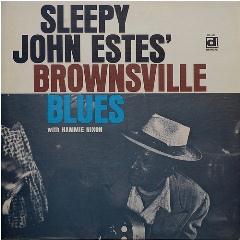
Brownsville Blues, album
Sleepy John Estes was one of the greatest Blues poets. Though he could barely play guitar, he was a fantastic, emotional singer and one of the best lyricists in the history of the Blues.
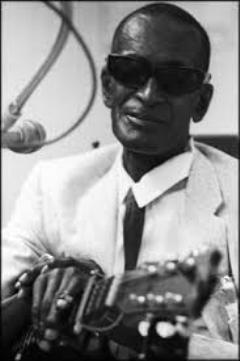
Sleepy John Estes
Sleepy John Estes - Brownsville Blues lyrics
Now I can straighten your wires : you know poor Vasser can grind your valves Man when I turn your motor loose : and it sure will split the air Now Vasser can line your wheels : you know poor Vasser can tune your horn Then when he set it out on the highway : you can hear your motor hum Now my generator is bad : and you know my lights done stopped And I reckon I'd better take it over to Durhamville : and I'm going to stop at Vasser Williams' shop Now I were raised in Lauderdale County : you know I was schooled on Winfield Lane Then what I made of myself : I declare it was a crying shame Now Brownsville is my home : and you know I ain't going to throwed it down Because I'm acquainted with John Law : and they won't let me down
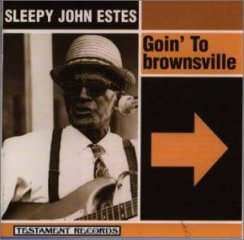
Going to Brownsville, album
Going to Brownsville, version by Ry Cooder
I'm going to Brownsville, take that right hand road Well, I'm going to Brownsville, take that right hand road And I ain't gonna stop walking till I get in sweet mama's door The girl I'm loving she's got great long curly hair The girl I'm loving she's got great long curly hair And her mama and her papa well, they sure don't allow me there If you catch my jumper, babe, hanging upside your wall Well, if you catch my jumper, babe, hanging upside your wall Well, you know by that I need my ashes hauled I'm going to Brownsville, take that right hand road I'm going to Brownsville, take that right hand road And I ain't gonna stop walking till I get in sweet mama's door
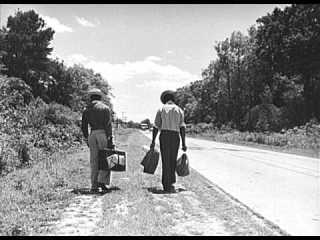
Going To Brownsville








